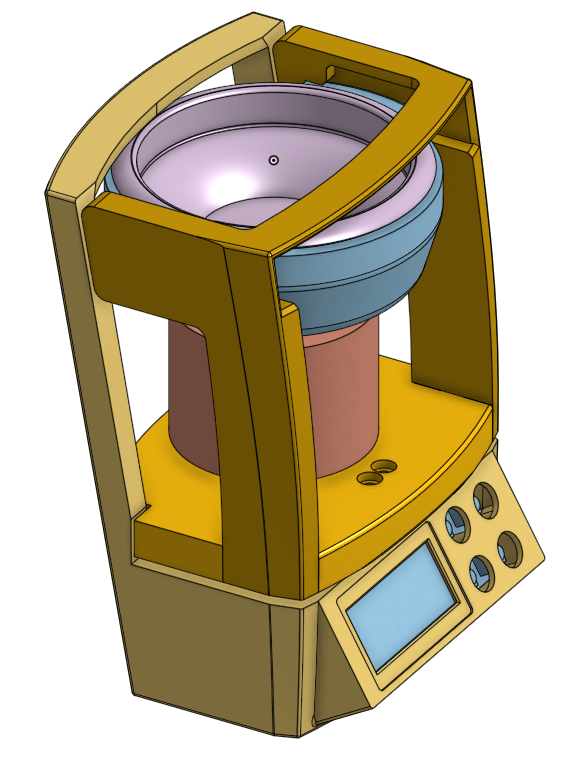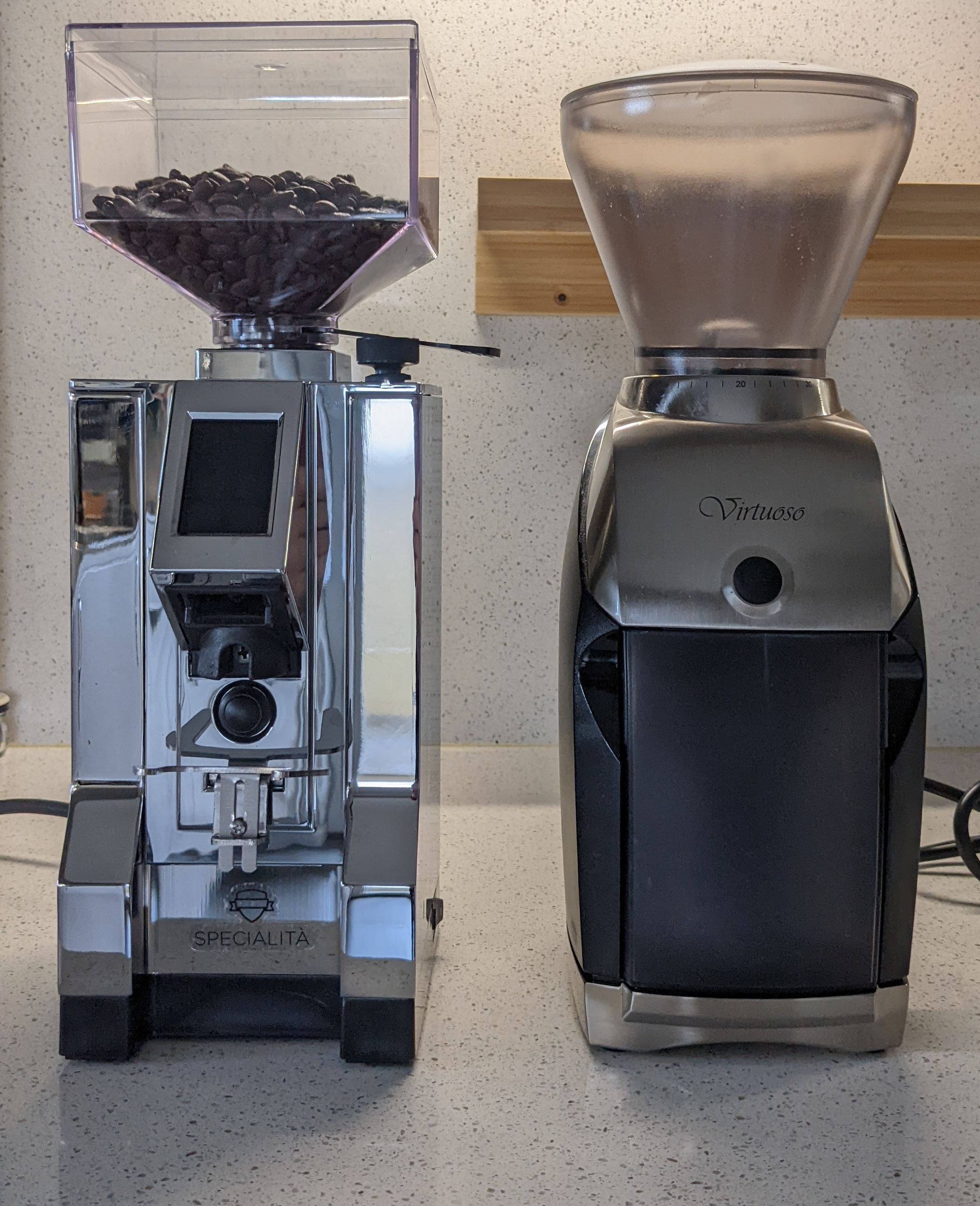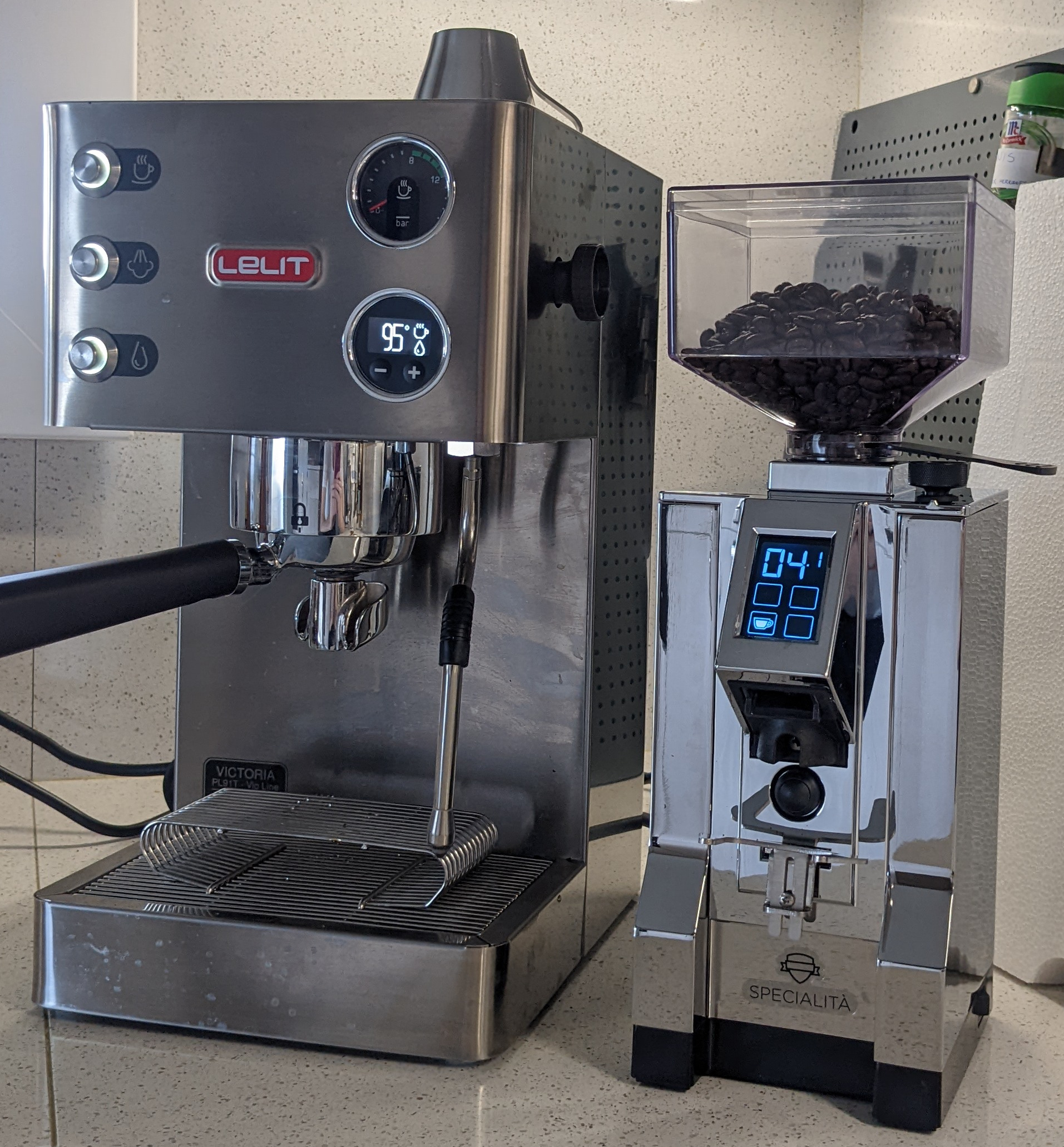The Virtuoso grinder has served me fairly well for a few years, but ever since I got an espresso machine (a Lelit Victoria), it’s been iffy. Grinding coarse is fine, but for espresso, I need to set the grinder so fine that the stall protection blows every other grind. That requires a reset by twisting the hopper to the coarsest setting and then moving it back. Not ideal when you’re trying to keep precision. On top of that, the steps are too large for the minute adjustments needed, and the ground coffee isn’t particularly uniform. This is well known and why people don’t recommend the Virtuoso for espresso.

I had spent many weeks trying to make a scale for the Virtuoso, with an integrated stand for a portafilter, instead of using the existing bucket. It never worked right, because it kept jamming against the inner walls of the grinder. Made worse by the chute not being centered, which means the 58 mm portafilter had to sit very close to one side. That in turn made it difficult to both make a balanced holder, and one that filled the portafilter without overflowing one side. Oh well, it doesn’t matter now anyway. It was a fun exercise in using the OnShape parametric CAD service to draw up a curved bucket.
When searching for a new grinder, I was looking for something for espresso, as well as quiet and compact. It seemed like these were the contenders, based on online forums:
- Eureka Mignon Silenzio
- Eureka Mignon Specialità
- Baratza Sette 270
- Baratza Vario
- Rancilio Rocky
Lelit William, since I already have a Lelit machine, was a consideration. The few comments I found about it was that it may have steps that aren’t fine enough. I didn’t want to risk that. The Rocky might not be great compared to the others. The Sette 270 may have quality issues. The Vario is generally recommended, and I used one when I worked at Google Dublin. It’s a decent machine, if a bit plasticy.
That leaves the Mignons. There are lots of versions of them, but the ones mostly suggested for espresso are Silenzio and Specialità. Both are stepless, and use a worm gear to make fine adjustments possible. The difference between them is some CHF 100 and that Specialità has a display so you can program two timers (single and double shot). Since I wanted repeatability, a timer with a 100 ms precision sounded useful.

Unpacking the Mignon wasn’t exactly an Apple experience, but it was certainly well padded. The message “Fragile - Made in Italy” may have been an unfortunate box print. Fast-forwarding, the set-up was easy. Pour some inexpensive beans in the hopper, and keep adjusting to finer grinding until it looks right. The motor can stall, but I like that I don’t have to mechanically reset it. Once it’s fine enough, I went on to set the first timer, based on my 8.5 g single shot that I used with the Virtuoso. After that, I went back-and-forth with the grind setting and timer until I had something that wasn’t just acid. That’s where my tastebuds for coffee end. I like the process, and good coffee, but I don’t really have the fine palette, or the patience for going deeper.
My conclusion is that Mignon is an excellent grinder. Much quieter than the Virtuoso, and the fine adjustment works great. Fast and consistent grinding. My single shot takes 4.1 s to grind. I also have high confidence it won’t shake loose. The chute and holder works well with the Lelit portafilter. One little annoyance is that I can’t seem to change the display contrast (although the manual says I should), and it never blacks out the display. Because of the always-lit display, it looks a bit cluttered.

It would be fun to replace the portafilter holder with a scale, but I don’t think that’s necessary, so I’ll spend that time on something more useful. I had plans to replace the espresso machine power switch with a timer, to power up the machine in the mornings, but now that I have two machines that should be on the same timer, I think I’ll just put the timer behind the machines.